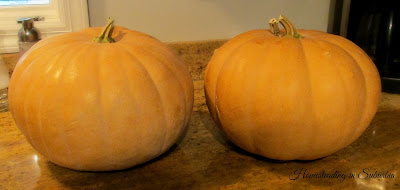Every year the Environmental Working Group publishes their list of the 12 'Dirtiest' and 15 'Cleanest' fruits and vegetables grown in today's market. Strawberries top the list this year as the dirtiest fruit, putting Apples now in second place.
They cite strawberries, a whopping 98% of them tested, had detectable pesticide residue with 40% containing 10 or more pesticides and some having upwards of 17 different pesticides. Some are considered benign but others are linked to cancer, reproductive damage, developmental damage, hormone disruptions and neurological problems. You can read their full findings here.
The saddest outcome of these findings is none of the pesticides found are against any laws or regulations governing our food production. Shame on you America!
Unfortunately, eating 100% organic is sadly not part of most people's budget (certainly not mine). However, allowing for organic fruits and vegetables in accordance with these guidelines should top your list and be factored into your food budgets. The higher cost of organic food far outweighs the benefits of saving a few dollars.
How can you buy organic on a budget? I've found that buying frozen organic vegetables are only 30 cents more per bag where we shop and actually cheaper when they are on sale. Plus, they are frozen immediately after picking which means they also have the highest nutrition content. I typically won't buy open bin vegetables, even organic. Have you ever seen someone touching every piece to find just the right one? No thanks, you can keep your germs. I am a bit neurotic about that.
Visit Farmer's Markets in your area. You have the opportunity to talk directly to the farmer about their growing practices. If it's not an organic farmer, ask if they are 'no spray'. You may not know how expensive it actually is to be an organic farmer. Not only are the materials more costly, but the government issues so many permit, classification, etc. fees on these farmer's, they literally can't afford to be labeled organic. Many follow organic practices but chose not to get the certifications for this very reason.
Visit Farms directly. Often they have produce stands or their own market where prices might be a little lower. They also tend to put out bushels of fruits and/or vegetables that are getting past their prime. Making applesauce? How does an entire bushel of Apples for $5 sound to you? If you are into canning, these are wonderful finds!
Finally, search the internet for coupons. Organic food coupons are not in abundance, that's for sure, but you can find them on occasion.
My bottom line...do what you can. That's how we do it.
 |
| Click on photo to enlarge and print |



































































